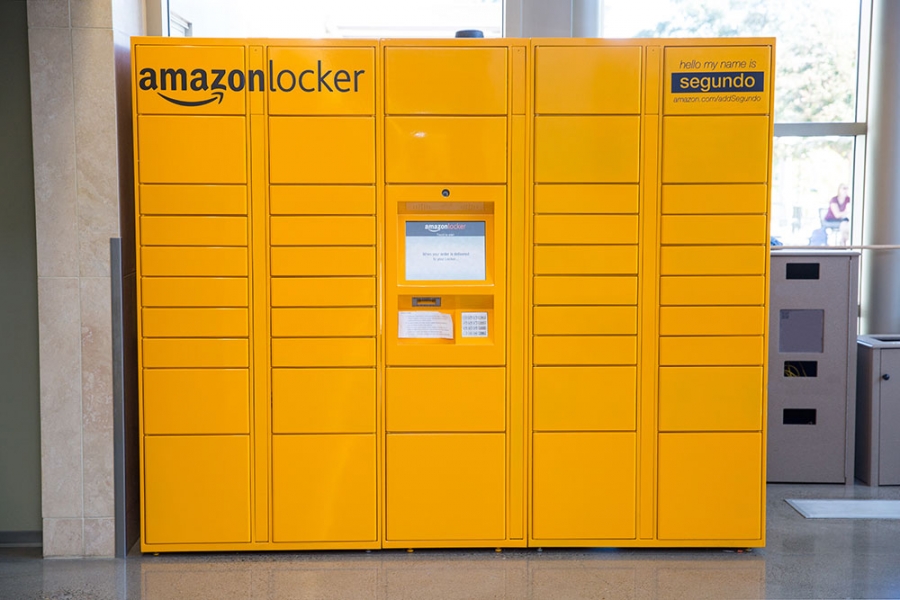Amazon wants to double its Locker program over the next year
Amazon for the past few years has installed its bright orange delivery lockers in many corners of the US, from hotel lobbies to convenience stores to supermarkets. Now, it’s eyeing plans to install a lot more, hoping to use the lockers to speed up Prime shipments and bolster its logistics network.
The e-commerce giant is quietly working to vastly expand its Amazon Hub Locker network, according to a person familiar with the company’s plans. It set a goal to evaluate over 1,000 new locations for its lockers every month, with expectations to approve a significant chunk of those sites, the person added.
At the moment, Amazon has fewer than 10,000 lockers located in US convenience stores, apartments and universities, the person said, so the plans point to an aggressive expansion.
“You’re talking about almost doubling the program in one year,” the person said.
The lockers, typically painted bright orange, are self-service kiosks customers can use for pickups and returns of their Amazon packages of electronics, toys, books and other products (though not perishable foods). Customers can open their lockers by punching in a code on a kiosk’s touchscreen or scanning a barcode.
The online retailer’s push to grow its Locker program, which started in 2011, appears to be part of Amazon’s work to speed shipments and achieve its goal of one-day Prime shipping in the US. With a larger footprint of lockers, Amazon delivery workers will be able to drop off dozens of packages at once, instead of one at a time at individual addresses. Plus, the expansion could help Amazon build its logistics network to make up for FedEx’s decision to stop delivering the retailer’s US packages.
For brick-and-mortar retailers, adding in new lockers could help them bring in more customers, though this solution comes with a bit of irony. Traditional retailers have been battered by more people shopping online, especially at Amazon, so some shops may see the e-commerce giant as a rival instead of a savior.
Laura Behrens Wu, founder and CEO of shipping software provider Shippo, said a lockers expansion would face a few challenges. First, while lockers may be safer than dropping off packages at a doorstep, customers may balk at the idea of picking up their packages away from home.
Also, adding lockers in stores may boost foot traffic, but perhaps not purchasing. “If someone is carrying a lot of boxes back home, would they want to buy even more stuff to take back home?” she said.
Signs of a renewed focus on the lockers program are already cropping up. Amazon in May unveiled plans to bring its lockers to 200 Stein Mart discount department stores. Also, Rite Aid in June agreed to expand its partnership with Amazon, adding staffed in-store pickups of Amazon packages after already placing lockers in over 300 of its stores.
Additionally, the company a few years ago started rolling out new appearances for its lockers to fit the look of specific stores as a way of convincing more retailers to house them. For instance, the company in Seattle created a set of blue and black lockers at a Chase bank that were branded with a Chase logo, and in Virginia created lockers branded to blend in at a Hilton hotel.
Amazon Locker is one of the several new ways Amazon is working with brick-and-mortar retailers to provide its customers with pickups and returns. For instance, the department store Kohl’s now accepts Amazon returns at all its 1,100 US stores.
The Kohl’s returns program has shown gains, with a 9% jump in new customers from a pilot program in Chicago, according to eMarketer. So far, the Amazon lockers have succeeded in bringing in more customers to stores, too, with up to 600 Locker visits per month, the person said.
For Amazon, these services help make up for its lack of physical retail stores. Plus, they’re much easier for delivery workers to locate than finding specific addresses.
“It makes it much easier for unskilled workers to do last-mile delivery,” Behrens Wu said.
Source: chainstoreage.com




